City of Jinju offers arts viewing and education for locals and visitors | By Sara Salansky (Winter 2025)
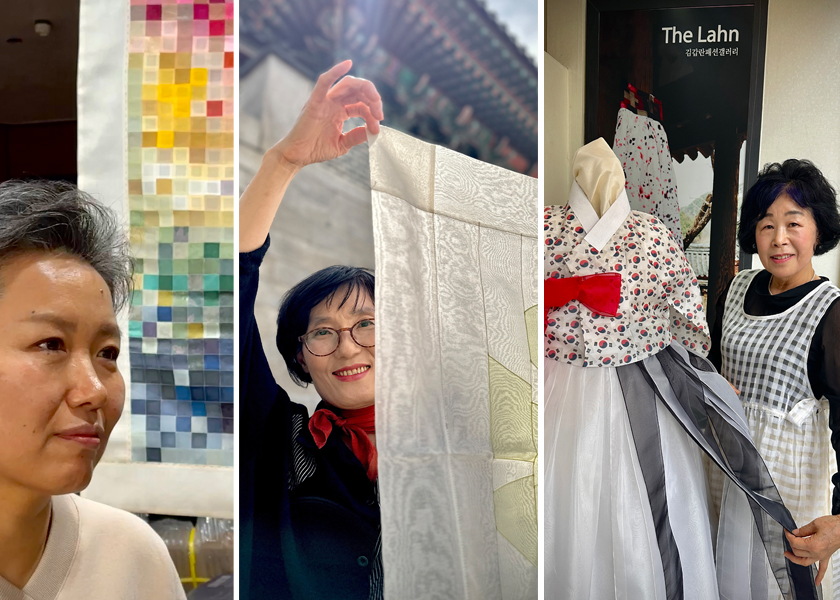
Through my interactions with Korean adoptees all over the world, I have discovered that many fellow adoptees want to learn more about Korean culture; its history, traditions, culture, music, visual and performing arts, and other topics. Many of us wish for one place in Korea where we can fulfill that hunger by learning and experiencing the culture firsthand.
There are various Craft Creation Support Centers in regions and cities all over South Korea sponsored jointly by the Korean Ministry of Culture, Sports and Tourism and the Korea Craft and Design Foundation. Such centers offer visitors experiences of the arts scene of that region, and opportunities to exhibit and ways to get technical support.
In May, I toured the Craft Creation Support Center in Jinju-si (Jinju city). I met the director and some highly-acclaimed guest artists who volunteer to instruct local people in their specialty art or craft. Including Jinju, there are eight cities that have a Craft Creation Support Center; the others are Seoul, Gyeonggi, Cheongju, Asan, Gimhae, Naju, and Jeongeup. Each Craft Creation Support Center specializes in an aspect of Korean culture that is representative of that region.
Jinju, located in South Gyeongsang province in southern South Korea, is a member of the United Nations Educational, Scientific and Cultural Organization (UNESCO) Creative Cities Network. The city is located in a key area specializing in crafts and folk art. Two local visionaries, the Jinju mayor Kyoo-il Jo and emeritus philosophy professor Byung Hoon Jeong, were instrumental in obtaining the sought-after network membership for the city.
Jinju’s geography points to why its people have produced fiber arts and woodcrafts since ancient times. It is a basin-shaped city and is bisected by a river. Jiri-san mountain is nearby, as is a vast forested mountain region. Wood crafting has long been practiced using timber harvested from the surrounding area. Because of the river, timber was not only available, but easily transported to other places by water.
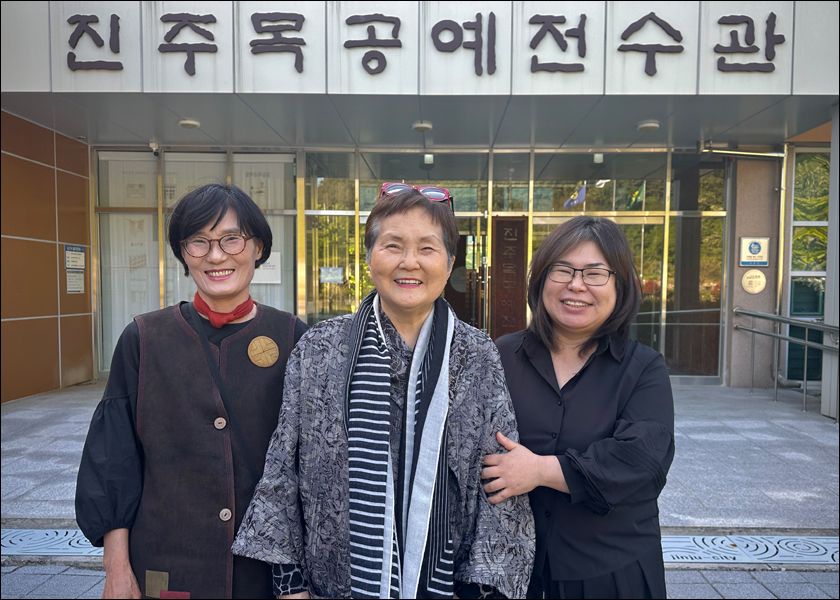
The Jinju Craft Center (JCC) promotes the region’s diverse crafts, particularly the region’s silk and woodcraft sectors. The JCC team leader is Jiyoung Seo, whose staff develops craft learning opportunities for people in Kyungnam and Jinju. The intent is for students to then become coaches and teachers who will promote the craft domestically and internationally. They also work with international artists who teach or take lessons.
The JCC building is large, with many rooms to support the diverse curriculum the center offers. Along with work rooms, some with highly technical equipment, there are classrooms, conference areas and exhibition space that invite idea-sharing and collaboration.
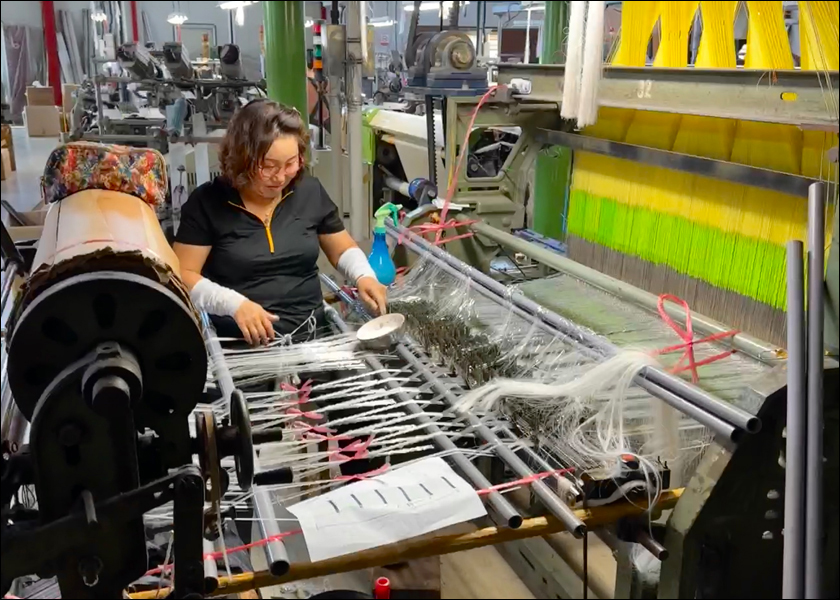
Jinju is also the home of Korean silk. The BJ Silk Co produces over 80 percent of the country’s silk, and is one of five large silk production areas globally, according to the Korean Silk Research Institute. For more than 100 years, silk has been the basis of most of Jinju’s textile arts. The environment beneath Jiri-san Mountain is ideal for raising silkworms. The clean water of the Nam River supports textile dyeing. Every October, Jinju holds a silk fair, which includes exhibits, competitions, and demonstrations of natural dyeing and other silk-processing steps.
The BJ Silk Co. also has silkmaking demonstrations, and there is a company store, Shemasilk, near the Gwangjang Market. BJ Silk also has a cosmetic line, Eau de Silk, developed from sericin, a silk protein. There is also an Eau de Silk store in Jinju.
A hotbed of cultural artists
In May 2023, the Jinju Craft Center hosted the 2023 Jinju Silk Residency in concert with an international exposition of Korean traditional quilting art (bojagi), the 2023 Biennial Korea Bojagi Forum. The residency program brought together 10 fiber artists from various countries to participate, appreciate, share, and collaborate with local artists.
Jinju is a hotbed of cultural artists. Chunghie Lee, a global icon in the world of Korean fiber art and founder of the Korea Bojagi Forum, wanted Jinju to host its first silk residency so that international artists could collaborate and learn from their Korean counterparts.
The first Silk Residency happened in 2023. For 10 days, local fiber artists worked with the international artists to create works for exhibition made from fibers specific to the region. During the residency, the artists also learned how to use natural dyes made from local products such as persimmons. The creations from the residency were displayed at the November 2023 Jinju Traditional Craft Biennial Exhibition.
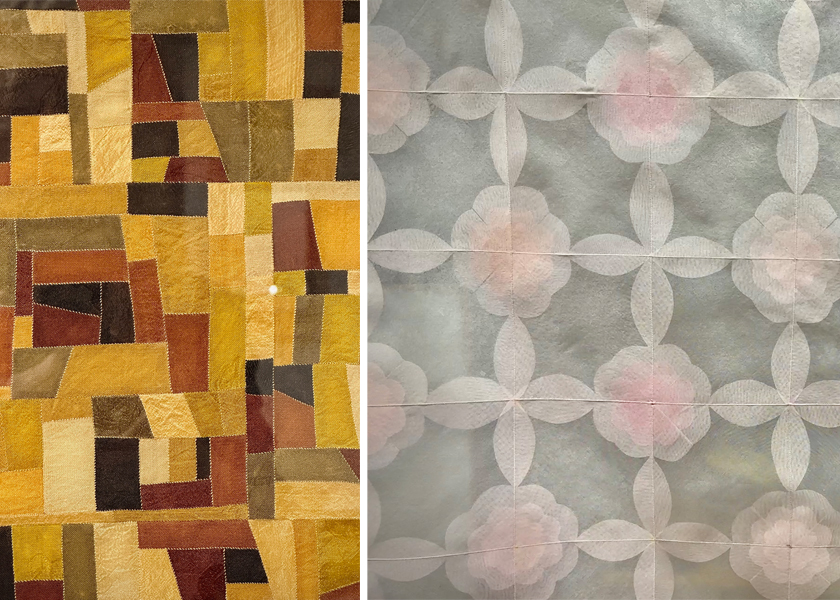
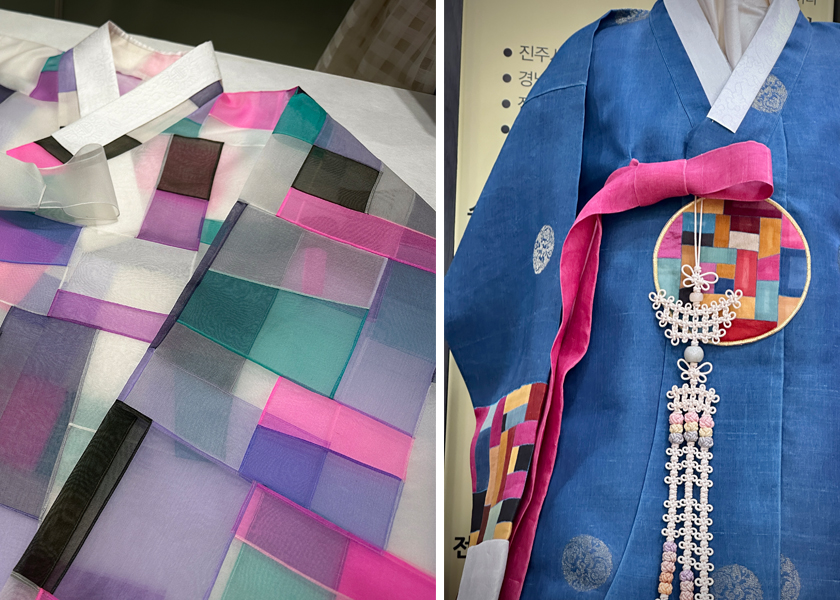
As an art form, bojagi has developed over the centuries from humble origins. Like Western quilting, bojagi began as a way to utilize various remnants of fabric to make something practical, such as a wrapping cloth to carry as a parcel or give as a gift. The art comes out of women’s creativity, frugality and poverty — the need to apply one’s creative problem solving to something out of practically nothing. The origins of bojagi itself seem to inspire its artists to reflect the art form’s humble character, even as they aspire to spectacular and beautiful art.
As a bojagi beginner, (I tried the art form for the first time in 2022), meeting the artists and seeing their work was humbling for me. I noticed among the artists a big dose of mutual respect and appreciation for each person’s artistic journey of love of the art, sense of responsibility to reach out through teaching, and preserving in our own ways this ancient Korean textile tradition.
Every bojagi artist I have met has had their own unique perspective on the art. No artist is trying to replicate another; instead each is making their own mark on the tradition with their own imaginations and original designs. Some artists are more notable than others, but we (even me, a rank beginner) are all artists nonetheless.
I spoke with three bojagi artists who were guest presenters at the Jinju Silk Residency, and a traditional woodworker who works with the JCC. A short biography and review of each artist’s specialty is below.
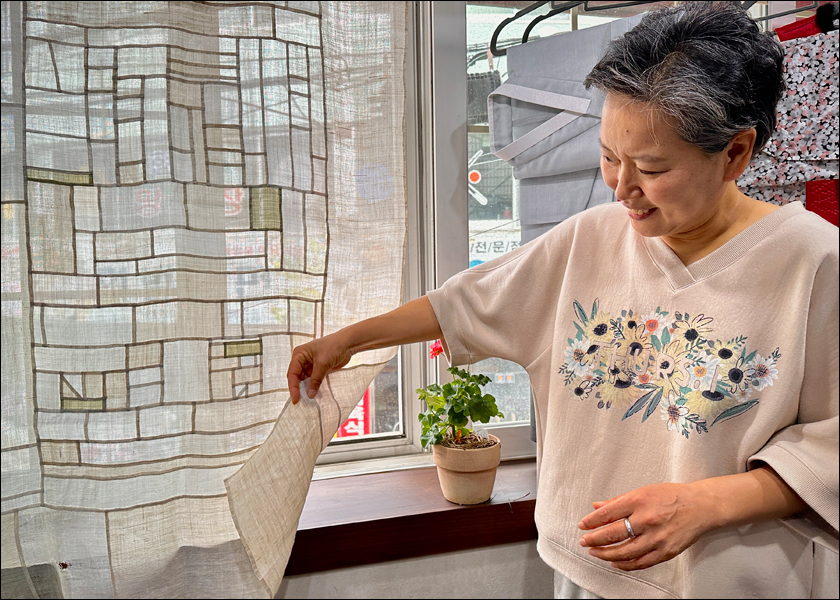
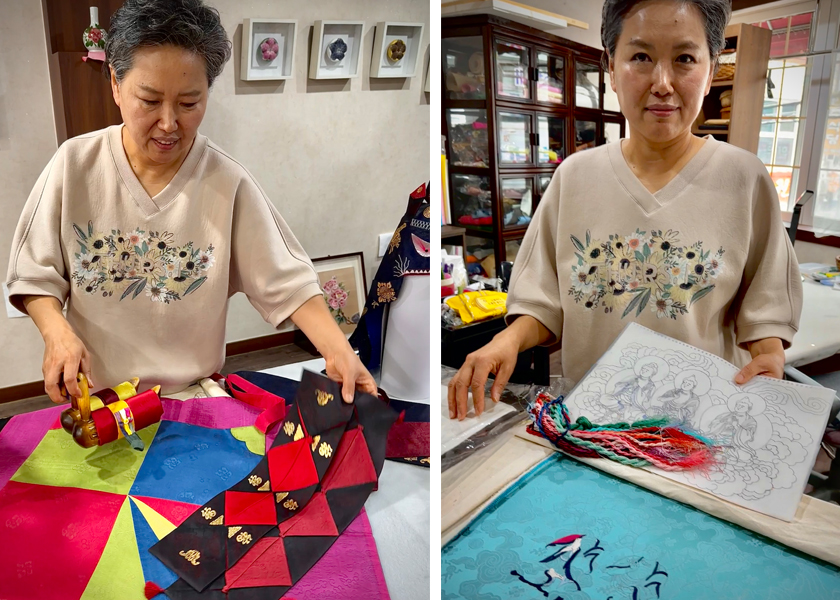
Bojagi artist Ming Yeong Jung
“I am just a housewife who enjoys sewing,” was the description that artist Min Yeong Jung offered about herself and her progress of her journey as an artist over many years.
This humble artist started her bojagi career purely out of curiosity, while sitting beside her father’s hospital bed 17 years ago. Her mother, now age 80, had a dowry for herself when she got married consisting, in part, of various traditional fibers and textiles from the region, such as mulberry tree fiber (mosi) and silk. Jung’s first bojagi piece was made with remnants of the dowry fabrics, and it is one of the cherished hangings displayed in her studio. She shares the space with her husband who runs a bicycle repair shop.
Jung said she began by practicing traditional Korean hand sewing, and what started as a hobby has now become her life. She has attended numerous craft competitions and her creations have been recognized. She has had several solo exhibitions.
The techniques of traditional Korean sewing are sometimes referred to as gyubang gongye which refers to a craft that solely belongs to women. In the past, Korean women had limited opportunities for external activities and learning. Into the textile works they created, they poured their innovation, creativity and elegance.
Viewing the work in her studio, I sense her regal and traditional style, developed to faithfully preserve this ancient and practical art form. Jung has studied embroidery, sewing techniques and patterns of the traditional clothing worn by the noble (yangban) class, the elite aristocracy of Korea. Her work gives us a visual image of the clothing and traditions of the upper classes during the Joseon Dynasty.
Jung considers herself to be just a housewife but she really isn’t. She is a prolific and skillful artist with a heart for sewing and working with her hands. She also has the patience and sense of excellence that drives her to constantly improve her craft. I left her studio feeling fortunate to be educated by her works.
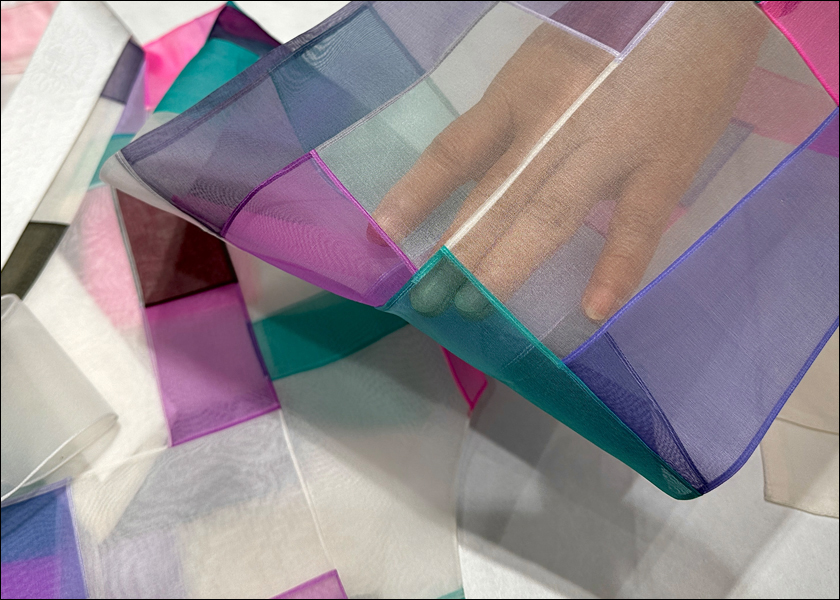
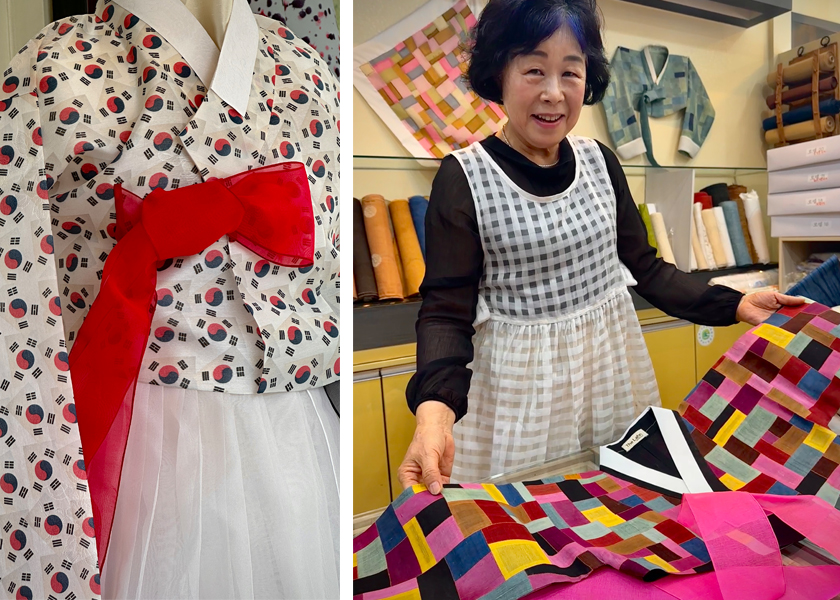
Hanbok artist Gahp Rahn Kim (Lahn Kim)
Gahp Rahn Kim, aka Lahn Kim, owns a specialized traditional dress (hanbok) shop, Lahn Kim located in Jinju, where she produces wearable art. She has been in business for more than 35 years, and she creates designer hanboks, as well as hand-dyed silk scarves and other silk accessories for her creations. She also sells quilted bojagi hangings.
The Lahn is Kim’s fashion label. Kim creates special-order hanboks, typically with a 10-day turnaround. Kim’s hanbok shop includes outfits made in the traditional way, but since learning the bojagi method 21 years ago, she has incorporated the concept and designs of bojagi in her custom hanboks as well. She uses the patchwork (jogabko) style in her designs.
She has used bojagi patching for various parts of the hanbok – the top ( jeogori), the skirt (chima), the tie closing the top (goreum), and the cuffs (kkeutdong). She has integrated bojagi design elements in both women’s and men’s hanboks.
As a designer she has a unique sensibility about color, and blending patterns to make appealing wearable art. This has helped her develop bold colors in her bojagi creations, where many colors are side by side.
Beginning with paper and colored pencils, Kim creates blueprints for her creations, choosing colors inspired by nature.
Kim has exhibited at the Korea Crafts Fair, Jinju Silk Fair, and the Jinju Silk Hanbok Fashion Show and at other smaller exhibitions throughout Korea. Her first international exhibition was at the March 2012 New York City Fashion Show.
Kim dyes silk in the fall after Korea’s rainy season at her Saimdang Workshop, where visitors can watch and even participate in the process. She is interested in teaching in order to pass on knowledge of techniques she has developed.
After our formal meeting was over, her question to me was, “What do you want to learn from me today?” I told her I wanted to learn how to make a maedeup (traditional button), which prompted her to get out yarn and scissors, and give me a personal lesson.
As a volunteer at the JCC, she guest-instructs some of the bojagi classes, and serves as a technical expert on all the daunting machines available in the sewing class. She obviously has great pride in the Korean traditional crafts she has learned, and a desire for all her students to be successful in the art at whatever level they strive for.
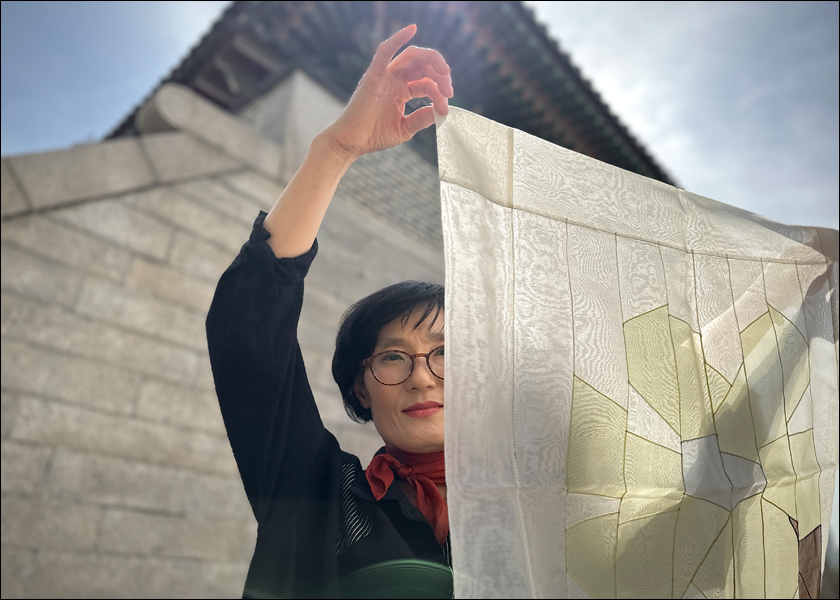
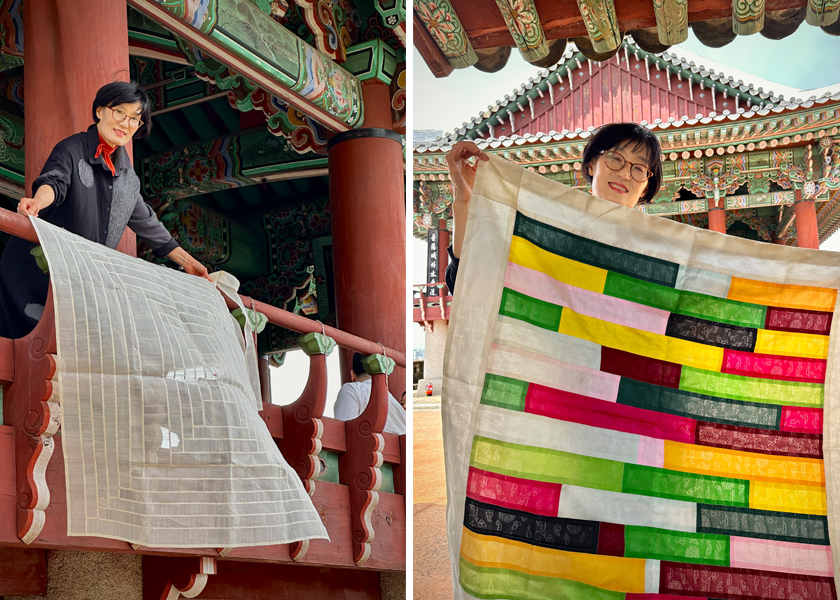
Hyun Sook Kang, Bojagi artist
Hyun Sook Kang first learned the bojagi craft 21 years ago. She took a class with her friend Lahn Kim, offered in Jinju. This artist’s work is simple and classy, and has a subtlety to it, with straightforward designs and fabric color selections that evoke a beautiful and clean sense of expression.
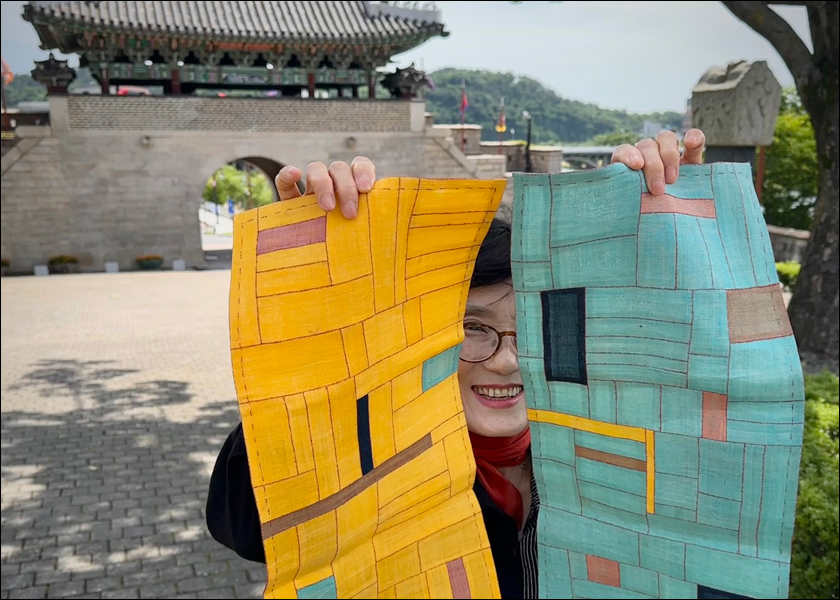
From some of my research while preparing to interview and write about these artists, I discovered that letter patterns is a type of bojagi style. As in wall hangings and paintings in Korea, the placement of words or even single characters with auspicious meanings on objects are intended to bring good luck to the recipient of the object.
During the Joseon dynasty period (1392 to 1910), typical letter patterns were the “lucky sign” (gil sang) patterns. There were Confucian symbols in ancient times, which were replaced by the more modern hangul letters of modern Korean.
Kang said she continues to enjoy the process of bojagi – not only the result, but the enjoyment of the repetitive stitching. There is a zen-like rhythm of stitching pieces together.
Some of Kang’s artistry has been accepted for international exhibits throughout Korea. She was one of the invited Korean artists at the 2023 Korea Bojagi Forum in Seoul. As a guest artist at the 2023 Jinju Silk Residency, Kang collaborated with the international artists and assisted with some of their projects that were in the November 2023 Jinju Traditional Craft Biennial Exhibition.
Kang said her love of bojagi has opened up a life in which she meets and collaborates with many international and domestic artists. She also enjoys a simple lifestyle from day to day, as a grandmother and a volunteer with the JCC as time permits, where she can meet new people and engage in dialogue with like-minded artists.
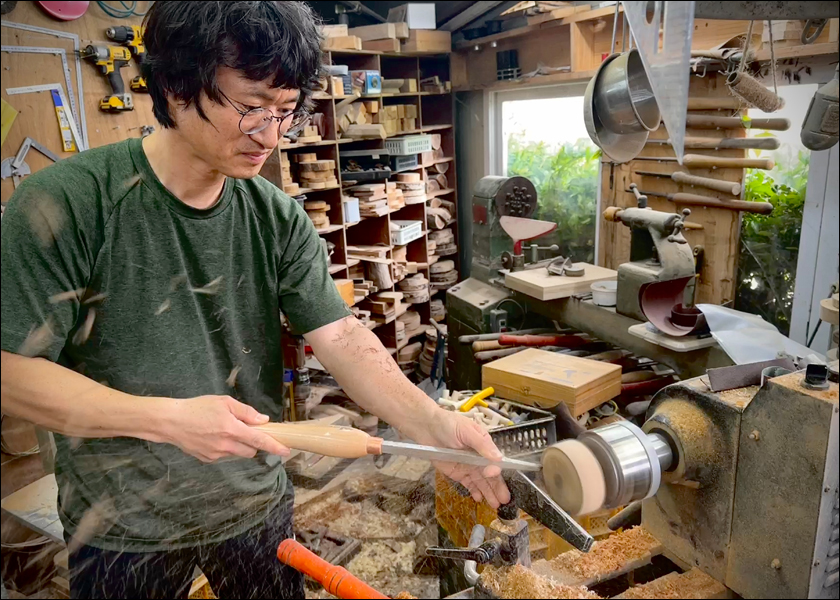
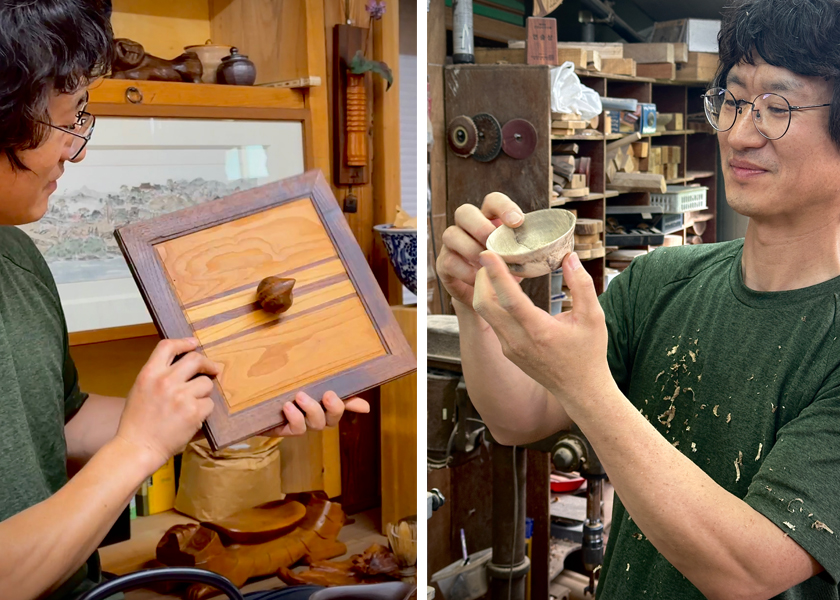
Min Cheol Park, former Jinju Craft Center director, woodcrafter, and Ph.D. Candidate
Min Cheol Park has a country home outside Jinju, where he likes to take visitors to his loft for a tea ceremony. I began to notice recently, with my many formal and informal meetings, sitting down over a drink seems to be a Korean traditional ice-breaker. In southern Korea, tea is often the beverage of choice.
“I started woodworking in 2000 and began making tea utensils from wood for Jinju’s tea culture. All of this is a gift from nature,” Park told me.
Park followed his father’s woodworking passion. Although his father has died, the elder Park’s work is displayed in Park’s home and studio, and is a daily inspiration to him. His father built the house Park still lives in with his mother, wife and two children. His father was a contemporary fusion woodcrafter who married modern designs to Korean traditional concepts. For his Ph.D. degree, Park is studying and creating wood pieces used in traditional Korean tea culture throughout history.
His mother is a professional landscaper who has made the surroundings of the house into a garden and haven. She has also made the surrounding mountainside beautiful through cutting, splitting and propagating plants with an eye for pleasing aesthetics.
In his studio, Park has a collections of tree branches, wood, and many woodworking machines. He has a deep knowledge of the tree species in the Jirisan Mountain area, and the qualities each wood provides in woodworking.
Park also volunteers at the JCC once a week. The woodworking shop offers classes for all ages and abilities in building tables, wooden boxes and serving trays. Park and other woodworking artists, through the JCC, provide a human link between the regional wood crafts and the landscape from which traditional woodworking emerged centuries ago. The passing down of this knowledge through local artists are the ultimate goals of JCC, with the support of the Korean people through the Ministry of Culture, Sports and Tourism.


